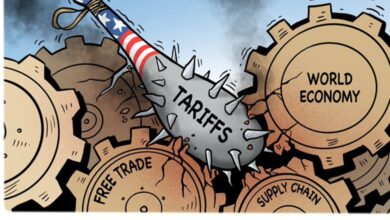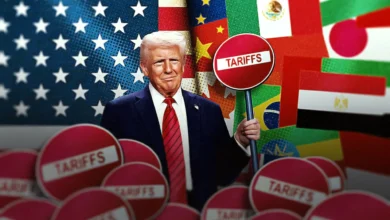Adani Group Planned To Take Legal Action Against Hindenburg In US, But Never Did It. Was Adani Scared That US Judges Will Deep Investigate & Adani Group Will Be Exposed?
Responding to Adani Group’s statement, Hindenburg said it stands by its report, adding that it has a long list of documents it will demand in a legal discovery process.

Responding to Adani Group’s statement, Hindenburg said it stands by its report, adding that it has a long list of documents it will demand in a legal discovery process.
In January 2023, Hindenburg Research, a U.S.-based investment research firm, unleashed a report that sent shockwaves through the global financial markets, particularly targeting India’s behemoth conglomerate, the Adani Group. The report, spanning 32,000 words, painted a grim picture of the Adani Group’s financial practices, accusing it of “brazen stock manipulation and accounting fraud” through a complex web of offshore entities. The report’s findings were stark, suggesting that Gautam Adani, the group’s founder and chairman, had amassed a staggering net worth of approximately $120 billion, with over $100 billion added in the last three years, largely due to the meteoric rise in the stock prices of Adani’s seven key listed companies. These companies, Hindenburg argued, had seen their valuations spike by an average of 819% during this period.
The Adani Group’s initial response was to launch a vehement denial, labeling the report “malafide” and “mischievous.” In an apparent show of strength and defiance, the conglomerate threatened legal action against Hindenburg in the U.S. But months passed, and no lawsuit was ever filed. This raises the inevitable question: Was Adani bluffing? Or was the group genuinely afraid that a U.S. court might uncover deeper, more damaging truths about its operations?
The Allegations: A Web of Corruption and Financial Misconduct
Hindenburg’s report was not just a simple accusation; it was a comprehensive investigation that claimed to have uncovered a network of Adani-family-controlled offshore shell entities in tax havens stretching from the Caribbean to Mauritius and the UAE. According to the report, these entities were used to facilitate corruption, money laundering, and taxpayer theft, siphoning money away from the group’s listed companies. Hindenburg claimed that these shell companies engaged in rudimentary efforts to disguise their true nature, all while playing a central role in propping up the inflated stock prices of Adani’s firms.
“Our research involved speaking with dozens of individuals, including former senior executives of Adani Group, reviewing thousands of documents, and conducting diligence site visits in almost half a dozen countries,” Hindenburg stated in its report. The short seller didn’t stop at accusations; it provided what it described as concrete evidence of financial misconduct that, if ignored, could potentially lead to an 85% downside in the valuations of Adani’s key listed companies. Hindenburg further highlighted that these companies had taken on substantial debt, including pledging shares of their inflated stock for loans, placing the entire group on precarious financial footing.
Adani’s Silence: A Tactical Retreat or Fear of Exposure?
Responding to the Adani Group’s threats, Hindenburg remained unshaken. The firm issued a statement saying that the Adani Group had not addressed any substantive issue raised in their report. “At the conclusion of our report, we asked 88 straightforward questions that we believe give the company a chance to be transparent. Thus far, Adani has answered none of these questions,” the short seller stated. The firm even welcomed the prospect of a lawsuit, stating that it would relish the opportunity to demand a long list of documents in a legal discovery process.
So why did the Adani Group, which initially seemed eager to take the battle to U.S. courts, never follow through? One plausible explanation is that the conglomerate feared the rigorous scrutiny of the U.S. judicial system. Unlike in India, where corporate influence can often cloud regulatory oversight, the U.S. courts are known for their stringent and independent investigative processes. A lawsuit in the U.S. could have compelled the Adani Group to open its books, potentially exposing irregularities that could severely damage its reputation and financial standing.
Moreover, Hindenburg’s report was no amateur effort; it was the result of a two-year investigation that uncovered a labyrinth of questionable financial transactions. Given the depth and breadth of the allegations, it’s conceivable that Adani feared the fallout of a legal battle in the U.S., where the discovery process could unearth even more damning evidence.
The Debt Trap: A House of Cards?
Another significant point of concern highlighted by the Hindenburg report was the Adani Group’s staggering debt. According to a foreign brokerage house CLSA, Indian banks have an exposure of ₹81,200 crore to the Adani Group, while the group’s total debt stands at ₹2 lakh crore (approximately $24 billion). This level of indebtedness, coupled with the group’s reliance on inflated stock prices to secure loans, paints a picture of a house of cards, precariously balanced and vulnerable to collapse.
The Adani Group’s financial practices, as outlined by Hindenburg, suggest that the conglomerate is on a precarious financial footing, with its vast empire propped up by a delicate balance of debt and inflated valuations. In this context, a deep investigation by U.S. courts could potentially trigger a domino effect, leading to a significant unwinding of Adani’s financial structure.
The Impact: A Global Financial Shockwave
The immediate aftermath of the Hindenburg report was a market rout that wiped out $65 billion in market capitalization from the Adani Group. The fallout was not just confined to the group itself; it sent shockwaves through the Indian financial markets, raising concerns about the broader implications for the Indian economy. The report came just before Adani’s planned ₹20,000 crore follow-on public offer (FPO), which was meant to shore up the group’s finances. However, the timing of the report and the subsequent market reaction raised questions about the viability of the FPO, further exacerbating the group’s financial woes.
Despite the Adani Group’s strong denial and accusations that the report was designed to manipulate its stock prices for Hindenburg’s gain, the damage was already done. The group’s shares plummeted, and the credibility of its financial practices was severely undermined. The volatility in Indian stock markets caused by the report was of great concern, not just for the group but for the broader investor community.
The Legal Threat: All Bark and No Bite?
In the days following the release of the Hindenburg report, the Adani Group issued multiple statements indicating that it was exploring legal options in both U.S. and Indian courts. The group’s legal head, Jatin Jalundhwala, was quoted as saying, “We are evaluating the relevant provisions under U.S. and Indian laws for remedial and punitive action against Hindenburg Research.” However, as time passed, it became increasingly clear that these threats were nothing more than empty rhetoric.
One reason for the Adani Group’s reluctance to file a lawsuit in the U.S. could be the realization that Hindenburg’s report was not only well-researched but also legally sound. In the U.S., defamation lawsuits, especially those involving public figures or entities, are notoriously difficult to win. The burden of proof is on the plaintiff to demonstrate that the defendant made false statements with actual malice – a high bar that Hindenburg, with its detailed research and evidence, would likely clear.
Furthermore, a lawsuit in the U.S. would have opened the door to a legal discovery process, where Hindenburg could have demanded access to a treasure trove of documents from the Adani Group. This could have included financial records, emails, and other internal communications that might have revealed even more damaging information. For a conglomerate already under fire for its opaque financial practices, the risks of such exposure likely outweighed any potential benefits of a lawsuit.
The Aftermath: A Lingering Cloud of Doubt
As the dust settled, the Adani Group’s failure to follow through on its legal threats left a lingering cloud of doubt over its financial practices and corporate governance. The group’s initial bravado, followed by a conspicuous silence, only served to reinforce suspicions that it had something to hide. For many observers, the episode was a stark reminder of the limits of corporate power and the importance of robust, independent regulatory oversight.
Hindenburg’s report, while devastating in its immediate impact, also served as a wake-up call for the broader investment community. It highlighted the need for greater scrutiny of corporate practices, particularly in emerging markets where regulatory oversight may be less stringent. The Adani Group, once hailed as a symbol of India’s economic rise, now finds itself under a cloud of suspicion, with its reputation and financial stability hanging in the balance.
Conclusion: The Elephant in the Room
In the end, the question remains: Why didn’t the Adani Group sue Hindenburg in the U.S.? Was it fear of exposure? A realization that the report was legally sound? Or simply a tactical retreat in the face of overwhelming evidence? Whatever the reason, the group’s failure to follow through on its legal threats speaks volumes about the strength of Hindenburg’s allegations and the vulnerabilities within Adani’s sprawling empire.
For Gautam Adani, a man who has built a vast fortune on the back of rapidly appreciating stock prices and a complex web of financial transactions, the Hindenburg report was a stark reminder that no empire is too big to fail. The group’s reluctance to engage in a legal battle in the U.S. suggests that even the most powerful corporate entities are not immune to scrutiny – and that the truth, once revealed, can be a powerful weapon in the hands of those willing to wield it.
As the Adani Group continues to navigate the fallout from the Hindenburg report, one thing is clear: the shadow of this controversy will loom large over its future, casting doubt on its financial practices and corporate governance for years to come. The legal battle that never was may well be the most telling chapter in the ongoing saga of Adani’s rise – and potential fall – from grace.




